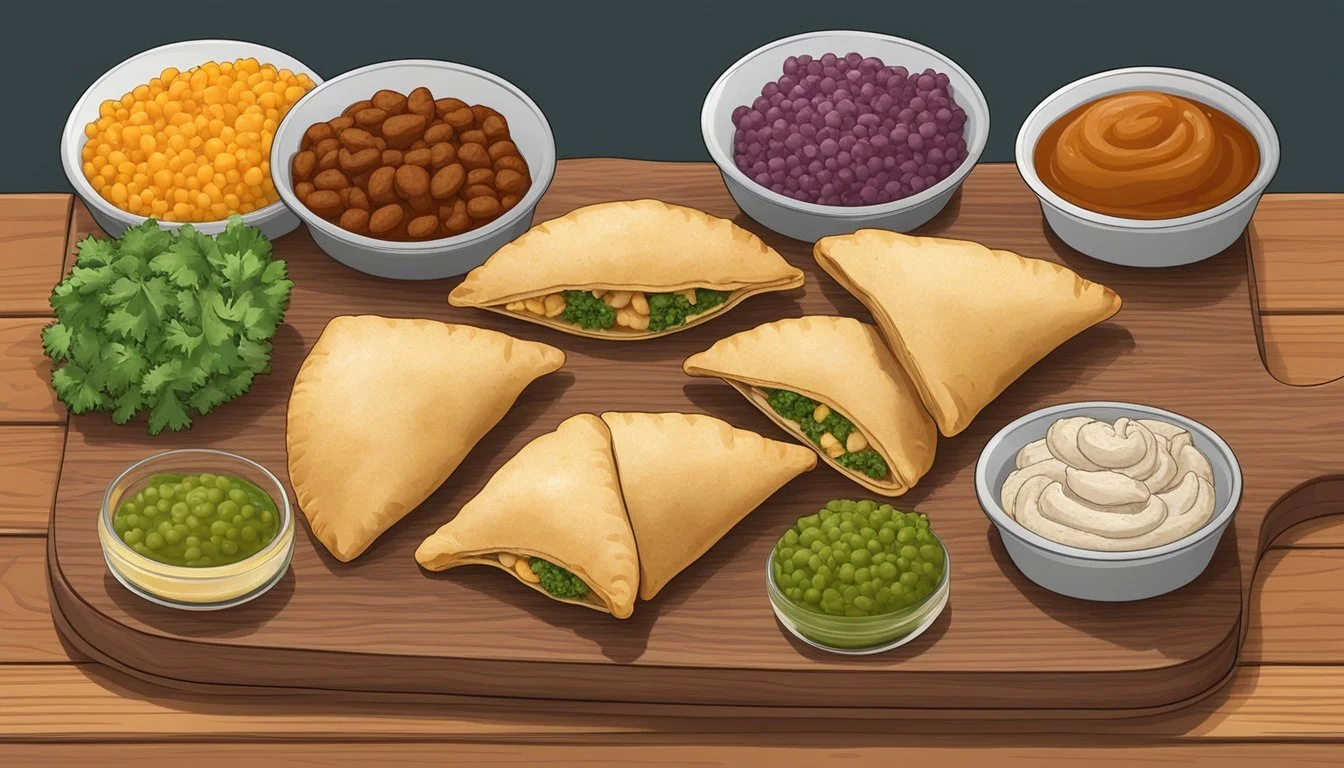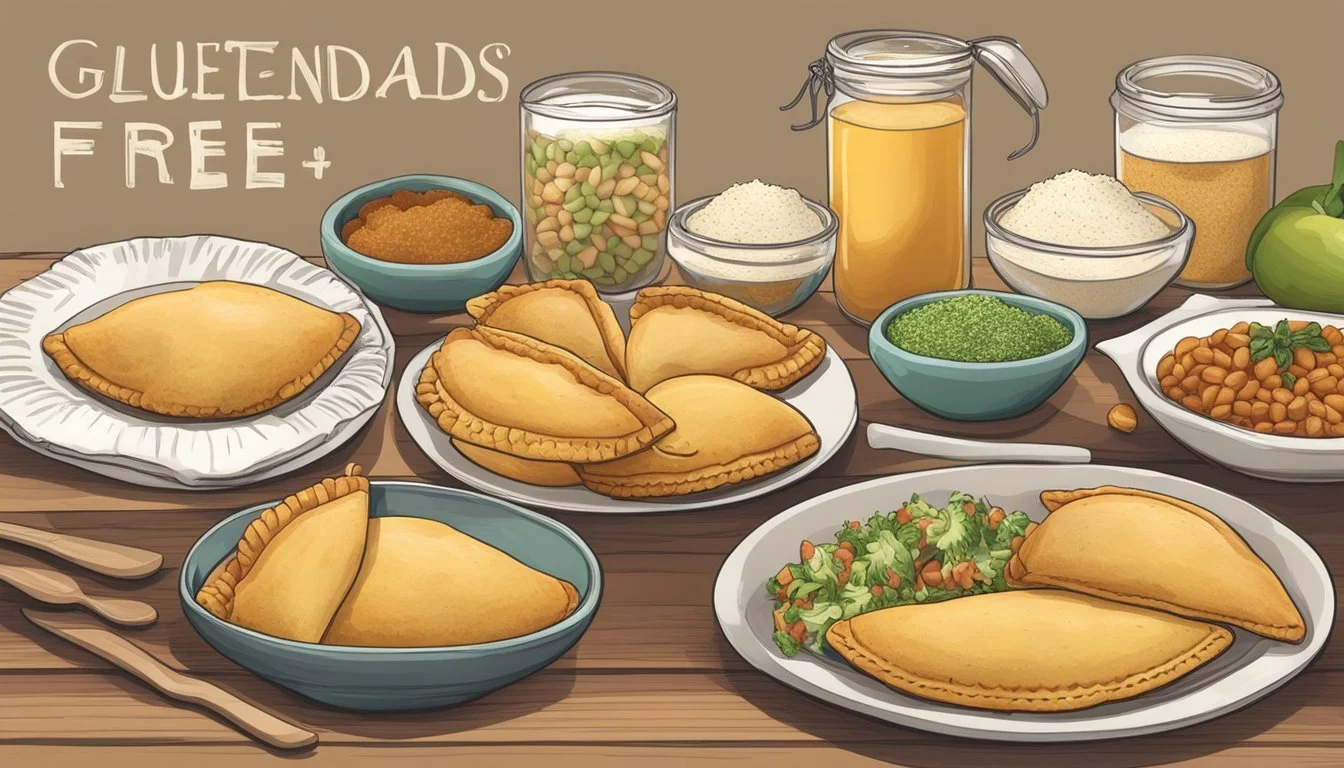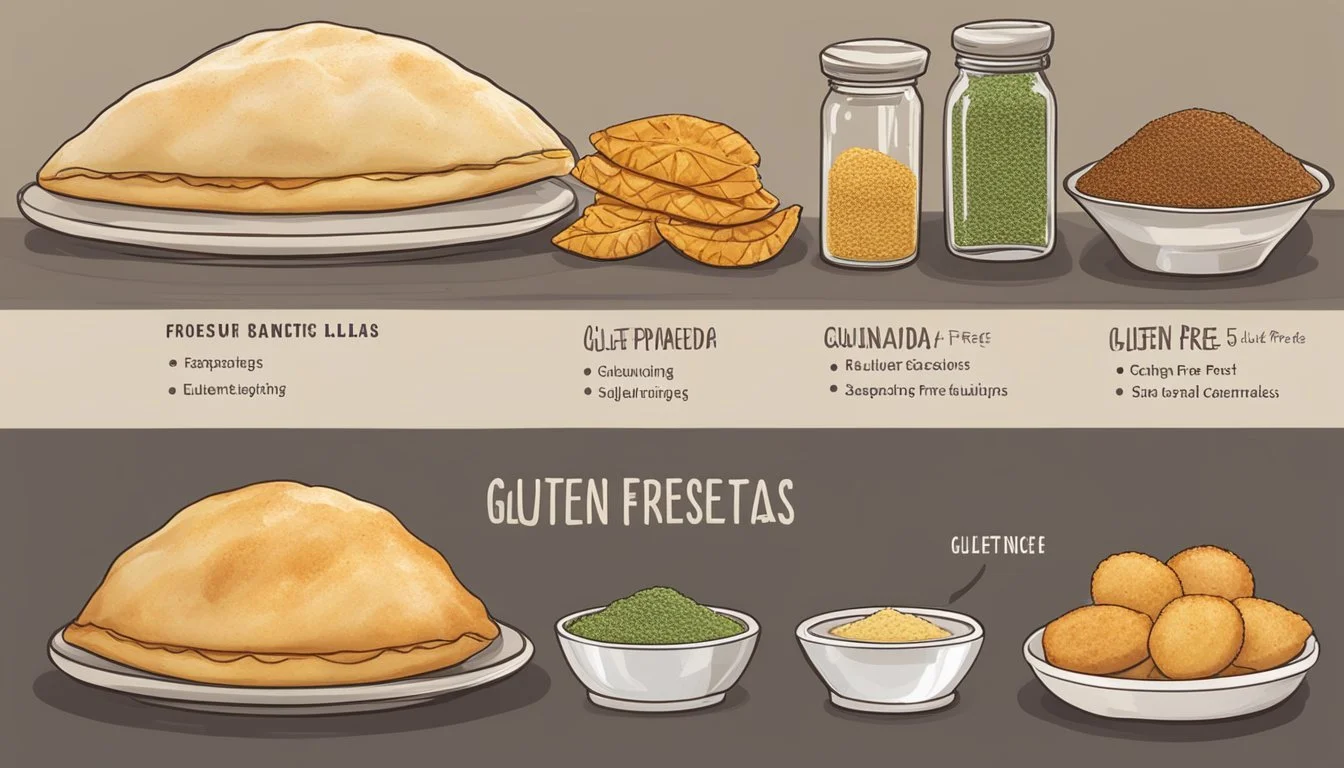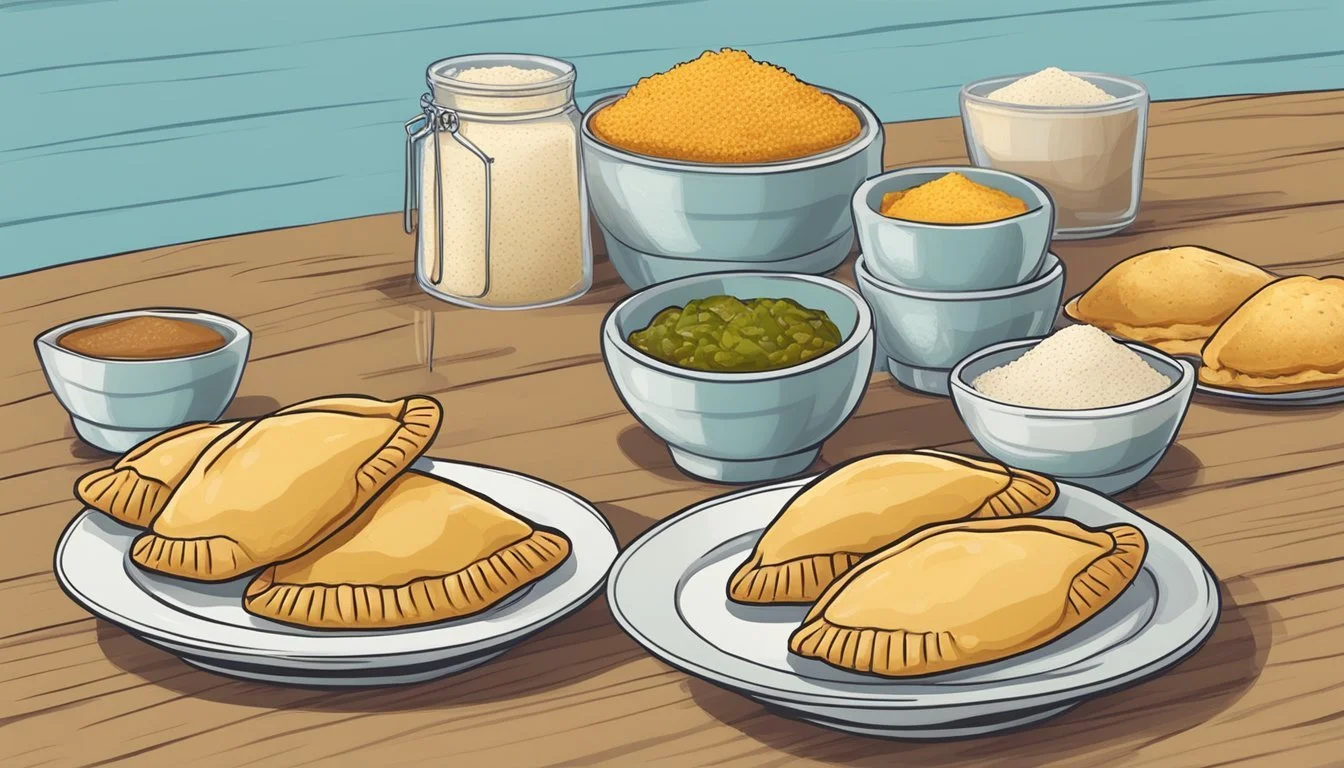Are Empanadas Gluten-Free?
Understanding Their Ingredients and Preparation
Empanadas are a beloved culinary staple originating from Latin America and have become popular worldwide, traditionally recognized for their flaky pastry and versatile savory or sweet fillings. However, the conventional recipe for empanada dough includes wheat flour, which contains gluten—a protein that must be avoided by individuals with celiac disease or those adhering to a gluten-free lifestyle. For these individuals, consuming gluten can lead to serious health complications, making it essential to find gluten-free alternatives that do not sacrifice the taste and texture of this beloved dish.
The emergence of gluten-free empanada recipes has made it possible for those with gluten sensitivities to enjoy empanadas without adverse health effects. With the right blend of gluten-free flours and careful attention to cross-contamination, empanadas can be made safe for celiac sufferers and others following a gluten-free diet. These adaptations open the door to a diverse range of fillings and methods, such as baking or frying, allowing for customization to personal taste and nutritional requirements.
To address the growing demand, many chefs and recipe developers have worked tirelessly to perfect gluten-free empanada dough that maintains the pastry's characteristic flakiness and flavor. The key lies in a meticulous selection of gluten-free flour blends and alternative binders that mimic the structural properties provided by gluten in traditional dough. This dedication to culinary inclusivity ensures that the delightful experience of eating empanadas can be shared by everyone, regardless of dietary restrictions.
Understanding Gluten and Its Effects
When exploring the realm of gluten-free diets, it's essential to understand what gluten is and how it can affect certain individuals. Some may have celiac disease or gluten sensitivities, which necessitates a gluten-free lifestyle, while for others, it might be a dietary preference.
What Is Gluten?
Gluten is a group of proteins primarily found in wheat, barley, and rye. When flour mixes with water, the gluten proteins form a sticky network that has a glue-like consistency, giving the dough elasticity and allowing bread to rise during baking.
Gluten, Celiac Disease, and Sensitivities
Celiac disease is an autoimmune disorder where the ingestion of gluten leads to damage in the small intestine. Individuals diagnosed with this condition require a strict gluten-free diet to manage symptoms and prevent long-term health complications.
Gluten sensitivities, also known as non-celiac gluten sensitivity (NCGS), can result in symptoms similar to celiac disease such as abdominal pain, bloating, and changes in bowel habits, but without the intestinal damage. Eliminating gluten-containing foods is the primary way to alleviate these symptoms for those with NCGS.
The Basics of Empanadas
Empanadas are a versatile and beloved staple in Latin American and Spanish cuisine. They consist of dough filled with a variety of ingredients, baked or fried to achieve a delectable, flaky texture.
Traditional Empanada Ingredients
Traditional empanadas are made with wheat flour dough, which is central to their structure and is not naturally gluten-free. The standard filling can vary widely but often includes meats, cheeses, vegetables, or fruits, depending on regional preferences and cultural influences. Argentina is famous for its beef-filled empanadas, while Colombian empanadas typically feature corn flour dough with a potato and meat filling.
Dough Ingredients:
Wheat flour
Water or milk
Fat (usually butter, lard, or oil)
Salt
Common Fillings:
Beef, chicken, pork, or fish
Cheese
Onions, peppers, or tomatoes
Boiled eggs, olives, raisins
Latin American Heritage of Empanadas
Empanadas hold deep roots in Latin American culture, with each country having its own unique variations that reflect the local cuisine and history. They are a reflection of cultural exchange and adaptation, having been influenced by Spanish cuisine after the Spanish colonization. These pastries are a common offering at festive occasions, family gatherings, and local celebrations across the continent.
Gluten-Free Empanada Ingredients
Creating gluten-free empanadas requires careful selection of ingredients to ensure both a similar texture to their wheat-containing counterparts and adherence to dietary needs. Here are specifics on the central components.
Choosing the Right Gluten-Free Flour
The foundation of a gluten-free empanada dough is a quality gluten-free flour blend. One may consider blends that include almond flour, coconut flour, or rice flour. Each of these flours offer different flavors and textural properties. Cornstarch is often added to the mix to lighten the dough and improve its structure.
Almond Flour: High in protein, imparts a nutty flavor.
Coconut Flour: Absorbs more moisture, which is useful in achieving the desirable dough consistency.
Rice Flour: Provides a neutral taste and helps to mimic the texture of traditional empanada dough.
Gluten-Free Binding Agents
Binding agents are paramount in gluten-free baking to compensate for the lack of gluten elasticity. Xanthan gum is a common additive that can help to bind the ingredients together and create a pliable dough. Without such a binding agent, the dough might crumble and fail to hold its shape.
Xanthan Gum: Typically a small amount is sufficient; often 1/4 teaspoon per cup of flour blend.
Dairy-Free and Vegan Alternatives
Those with dairy intolerances or following a vegan diet can substitute unsalted butter with vegan butter. If eggs are to be avoided, one can use a chia egg—a mixture of chia seeds and water that gels upon resting—as a substitute in the dough recipe.
Vegan Butter: Ensure it is cold, as with regular butter, to achieve a flaky pastry.
Chia Egg: Combine 1 tablespoon chia seeds with 2.5 tablespoons water to replace one egg.
In addition, ingredients like olives can be included in the filling for an added depth of flavor, appealing to those seeking variations within the realms of gluten-free and vegan empanada experiences.
Empanada Dough Preparation
Preparing gluten-free empanada dough involves careful mixing to avoid overworking the dough and attentive rolling to achieve the desired thickness. Since gluten-free dough can be more delicate than traditional dough, precision and gentleness are key.
Mixing and Kneading Gluten-Free Dough
To make the gluten-free empanada dough, start by combining a gluten-free flour blend with salt and any other dry seasonings as required by the recipe. Then, cut the cold butter into small cubes. Using a pastry cutter or a fork, work the butter into the flour mixture until it resembles coarse crumbs. It's important not to over-mix, as this can lead to tough dough.
In a separate bowl, mix the wet ingredients which typically include water and oil. Gradually add this to the flour and butter mixture, stirring until a dough begins to form. You may need to use your hands to gently knead the dough until it holds together. If the dough seems dry or crumbly, adding a bit more water, one tablespoon at a time, can help.
Rolling and Cutting the Dough
Once the dough is ready, it should be chilled for about 30 minutes before rolling. This helps firm up the fats, which makes for a flakier crust and easier handling. After chilling, lightly dust a clean surface with gluten-free flour to prevent sticking. Using a rolling pin, roll the dough out to a thickness of roughly 1/8-inch, working from the center towards the edges in smooth, even strokes.
For consistent empanadas, use a round cutter or the rim of a glass to cut out circles—typically, a 4-6 inch diameter is a good size. Gently gather and re-roll the dough scraps to maximize yield, being cautious not to overwork the dough, which can lead to hardness once baked.
Empanada Fillings and Seasoning
Empanadas can vary widely in their fillings and seasonings, giving them a rich and diverse flavor profile. Whether one opts for savory or sweet, the key to delicious empanadas lies in the balance and blend of ingredients used.
Savory Filling Varieties
For savory empanadas, fillings can include a range of meats, vegetables, and cheeses. Chicken and ground beef are classic options, often sautéed with onions, bell peppers, and seasoned with salt, pepper, and cumin to enhance their taste. Vegetarian alternatives may feature black beans, spinach, or a mixture of veggies like potatoes and mushrooms. A combination of cheese and ham can satisfy those craving a salty, creamy texture.
Sweet Empanada Options
On the sweeter side, fillings might consist of fruits such as apple, gently cooked with cinnamon and sugar. Some opt to incorporate savory elements with sweet by adding cheeses that melt well, creating a contrasting yet harmonious flavor.
Seasoning and Spices
Seasonings play a crucial role in defining the flavor of empanada fillings. Essentials include:
Kosher salt: A pure, coarse-grained salt that dissolves easily, enhancing the natural flavors of the filling.
Black pepper: Provides a slight heat and sharpness.
Garlic: Adds depth and aroma, often used minced or as powder.
Cumin: Brings a warm, earthy note, especially common in Latin American recipes.
Paprika: Offers sweetness or smokiness, depending on the variety used.
Chili: Introduces spice and warmth, often found in recipes seeking a bit of kick.
Balancing these spices is key; they should complement the main ingredients without overpowering them.
Forming and Sealing Empanadas
Forming and sealing empanadas is essential in achieving the perfect texture and preventing fillings from spilling out during the cooking process. Proper techniques ensure that the crust crisps evenly while encapsulating the flavors inside.
Shaping Empanadas
To shape empanadas, one commonly starts with gluten-free dough that has been rested and chilled. After rolling out the dough to an even thickness, typically about 1/8-inch, it is cut into circles using a round cutter or the rim of a bowl. The size of the empanadas can vary, with a diameter usually between 4 to 6 inches.
Roll the dough: Roll out to approximately 1/8-inch thickness.
Cut out rounds: Use a cutter or bowl to create even circles.
Some individuals use a tortilla press lined with plastic to achieve uniform circles, which can be especially helpful when dealing with a gluten-free dough that may be more fragile.
Sealing Techniques
Once the filling has been placed on each dough circle, sealing the empanadas properly is crucial. A tablespoon or two of filling is sufficient; overfilling can lead to leaks during baking or frying. The dough is then folded over the filling to create a half-moon shape.
Folding: Fold the dough over the filling.
Pressing: Press the edges together gently, ensuring no filling escapes.
For a secure seal, one can press the edges with a fork, creating a pattern while ensuring the edges are firmly sealed together. Additionally, brushing the edges with an egg wash before folding can help to seal the dough more effectively.
Fork: Use a fork to crimp and seal the edges.
Egg wash: Brush the edges with egg wash for a better seal.
After sealing, the empanadas can be baked or fried to a golden, delicious finish.
Cooking Methods
When preparing gluten-free empanadas, the cooking method can greatly influence the texture and flavor of the final product. Achieving a desirable crust and ensuring the filling is cooked through are key considerations whether one is baking or frying the empanadas.
Baking Gluten-Free Empanadas
To bake gluten-free empanadas, one typically preheats the oven to a temperature range between 350ºF and 425ºF. Lining a baking sheet with parchment paper is a standard step to prevent sticking and ensure even cooking. Following this, one rolls out gluten-free dough to a thickness similar to pie crust, cuts it into rounds, and adds the filling. Before baking, applying an egg wash can provide a golden finish to the empanadas. Baking times may vary, but a rule of thumb is to bake until the crust is golden brown, which usually falls between 20 to 30 minutes.
Oven Temperature: 350ºF to 425ºF
Baking Sheet Preparation: Line with parchment paper
Dough Thickness: Similar to pie crust
Egg Wash: Apply for golden finish
Baking Time: 20-30 minutes until golden brown
Frying Gluten-Free Empanadas
Frying adds a distinctive crispness to the empanadas' texture. One must heat a suitable oil such as olive oil in a fryer or a deep skillet to achieve a temperature of 350ºF to 375ºF. Carefully placing the filled dough into the oil and frying until they are golden brown on both sides will properly cook the empanadas. The empanadas need to be turned occasionally for even cooking, and cooking time is typically shorter than baking, with a range of 2-4 minutes per side being common.
Oil Type: Preferably olive oil for its flavor and health benefits
Fryer Temperature: 350ºF to 375ºF
Cooking Time: 2-4 minutes per side until golden brown
Alternative Cooking Methods
While baking and frying are traditional methods, alternative methods such as using an air fryer are becoming more popular. An air fryer requires minimal oil, providing a healthier option while maintaining a crisp exterior. The temperature and time settings may need adjustment compared to standard frying, and following the manufacturer’s instructions is recommended. Some users brush the empanadas with olive oil before air frying to achieve a more traditional fried texture.
Minimal Oil Usage: Healthier option with less oil
Crispy Texture: Achieved by brushing with oil
Temperature and Time: Follow air fryer’s instructions
Serving and Storage
When serving gluten-free empanadas, one can enhance their flavors with the right accompaniments, and it’s equally important to understand the correct storage and reheating methods to maintain their texture and taste.
Accompaniments and Dips
Empanadas, traditionally served hot, pair well with a range of dips and sauces. A bold dollop of salsa or a drizzle of olive oil can bring out the rich flavors of the filling. Homemade dips like guacamole or a light sour cream sauce are also excellent choices. Serving them with a side of fresh salsa adds vibrancy and a spicy kick.
Storing and Reheating
To store baked empanadas, allow them to cool completely. Place them in an airtight container and refrigerate if they are to be consumed within a couple of days. For longer storage, they can be wrapped individually in plastic and then placed in a freezer bag, stored in the freezer for up to three months.
To reheat, the empanadas should be placed in an oven preheated to 350ºF until they are warmed through. By reheating them in the oven, one can preserve the pastry’s crispness better than in a microwave. If empanadas have been stored frozen, it is not necessary to thaw them before reheating; they can go straight from the freezer to the oven, but one might need to extend the reheating time slightly.
Gluten-Free Empanada Recipes
Crafting gluten-free empanadas is a delightful experience that allows individuals with dietary restrictions to enjoy this classic dish. The recipes provided focus on ensuring the integrity of the texture and flavor of traditional empanadas while utilizing gluten-free ingredients.
Classic Gluten-Free Empanada Recipe
For those seeking the traditional taste of empanadas without the gluten, starting with a base recipe that mimics the original is key. They begin with preparing a gluten-free dough, which typically involves a blend of gluten-free flours. The dough should be rolled out after chilling to a thickness comparable to pie crust at approximately 3-4mm. For baking, one should preheat their oven to 350ºF and bake until the crust is golden. Fillings can range widely according to one's preferences; however, maintaining a balance between moisture and flavor ensures a satisfying filling-to-crust ratio.
Ingredients for Gluten-Free Dough:
Gluten-free all-purpose flour blend
Cold butter or a dairy-free alternative
Salt and sugar for seasoning
Wet ingredients such as buttermilk or an egg (or alternatives for a vegan option)
Steps:
Mix the dry ingredients.
Incorporate cold, cubed butter until the mixture resembles coarse crumbs.
Add wet ingredients to form a dough.
Chill, then roll out and shape as desired.
Innovative Variations and Substitutions
While the classic recipe provides a solid foundation, variations and substitutions play a crucial role in catering to diverse tastes and dietary needs. For example, the type of gluten-free flour used can be adjusted – from rice flour to almond flour – to give different flavor profiles and textures. Fillings can lean traditional with seasoned meats and cheeses or venture into more innovative territories with plant-based proteins or dessert-inspired combinations.
Example Variations:
Flour: Swap traditional gluten-free blends with almond, coconut, or even chickpea flour for a nutritional twist.
Fillings: Opt for savory favorites like beef, chicken, or vegetables, or explore sweet alternatives using fruits or a chocolate-nut combo.
Embracing substitutions allows for customization of the empanada to meet dietary restrictions, such as dairy or egg allergies, and personal taste preferences. By thoughtfully choosing substitutions, one can craft empanadas that are not only gluten-free but also address a wide range of dietary needs with the same delicious outcome.
Living Gluten-Free with Empanadas
Empanadas can be a delicious addition to a gluten-free lifestyle if they are prepared with the right ingredients. People with celiac disease or gluten intolerance can enjoy this traditional dish by following specific guidelines to ensure their diet remains gluten-free.
Incorporating Empanadas into a Gluten-Free Diet
For those following a gluten-free diet, the key to enjoying empanadas lies in the preparation of the dough. Traditional empanada dough is made with wheat flour, which contains gluten. To adapt this for a gluten-free lifestyle, one must use a gluten-free flour blend that often includes a combination of rice flour, tapioca flour, and xanthan gum to mimic the properties of wheat flour.
Here's a simple recipe framework for gluten-free empanada dough:
3 cups of a gluten-free flour blend
1 teaspoon of xanthan gum (if not included in the flour blend)
1/4 teaspoon of salt
1/2 cup of unsalted butter or a suitable non-dairy alternative
1 large egg
Water as required to achieve dough consistency
When creating the dough, it's essential to mix the ingredients until they just come together to avoid overworking it, which can result in tough empanadas. Once the dough is ready, it should be chilled before rolling out and filling with either sweet or savory ingredients.
Tips for Avoiding Cross-Contamination
Cross-contamination is a critical concern for individuals with celiac disease or gluten sensitivities. Even a small trace of gluten can cause adverse reactions, so it's vital to take precautions during food preparation.
Here are practical steps to avoid cross-contamination:
Clean Surfaces: Before beginning, thoroughly clean all surfaces, utensils, and equipment that will be used to make the gluten-free empanadas.
Separate Cookware: Use dedicated gluten-free cookware and utensils to eliminate the possibility of mixing gluten-containing residues.
Ingredient Management: Store gluten-free ingredients in separate, clearly-labeled containers and ensure that they are not shared with gluten-containing products.
Cooking Practices: When cooking empanadas, use a separate oven or fryer that has not been used to cook gluten-containing products, or thoroughly clean the appliance before use.
Individuals should also be vigilant when eating out or purchasing pre-made gluten-free empanadas. It is recommended to inquire about the kitchen's handling practices concerning gluten and ensure that the establishment has a good understanding of cross-contamination risks.
Global Influence and Adaptations
Empanadas have traversed borders and oceans, evolving with local tastes and ingredients. This versatility in preparation and adaptation underscores the global love for these stuffed pastries.
Empanadas Around the World
In Latin America, empanadas are a staple with each country offering its own twist. For instance, in Argentina, empanadas might be filled with beef, chicken, or even sweet corn, reflecting the regional culinary practices. Spanish cuisine has also left its mark on the empanada, with a variety of seafood fillings akin to Spain's coastal gastronomy.
Latin American Varieties
Argentina: Beef, chicken, sweet corn
Mexico: Spicy meats, topped with salsa
Chile: Seafood, cheese, and beef are common
Spanish Influence
Traditional fillings like tuna, cod, or chorizo
Often paired with tomato-based sauces (What wine goes well with tomato-based sauces?) or aioli
Fusion Empanada Flavors
Chefs have taken the empanada's basic concept and infused it with flavors from around the globe. The result is a thrilling array of fusion empanadas that combine traditional Latin American or Spanish elements with ingredients and techniques from other cuisines.
Examples of Fusion Empanadas:
Korean BBQ beef with kimchi
Mediterranean spinach and feta
Indian spiced potato and pea filling
These creative interpretations showcase the empanada's capacity for innovation while honoring its culinary roots. The global influence on the traditional empanada not only enhances its flavors but also its appeal to a wider audience.









